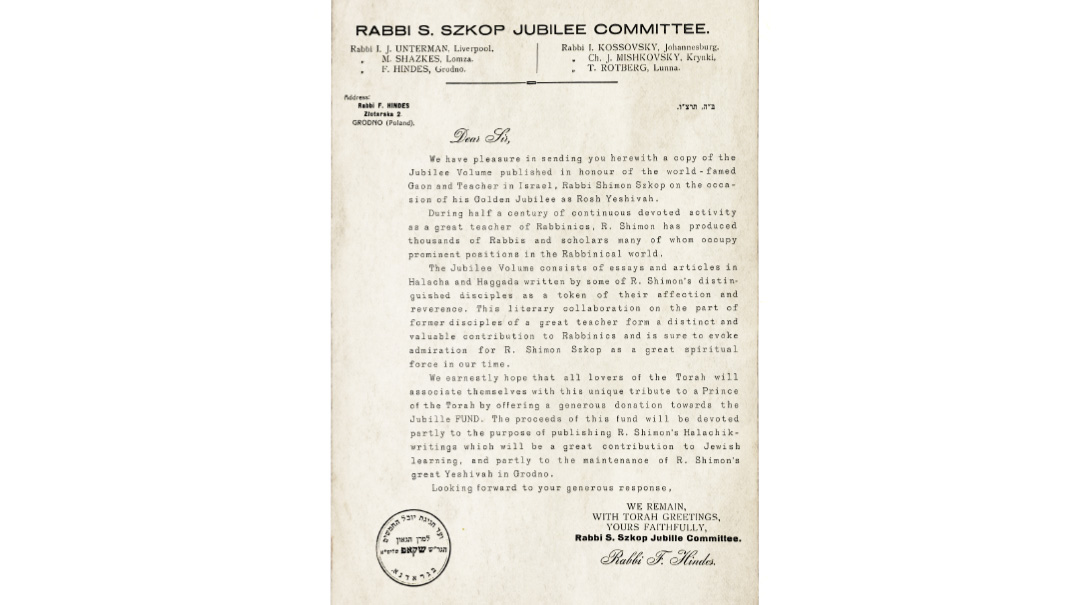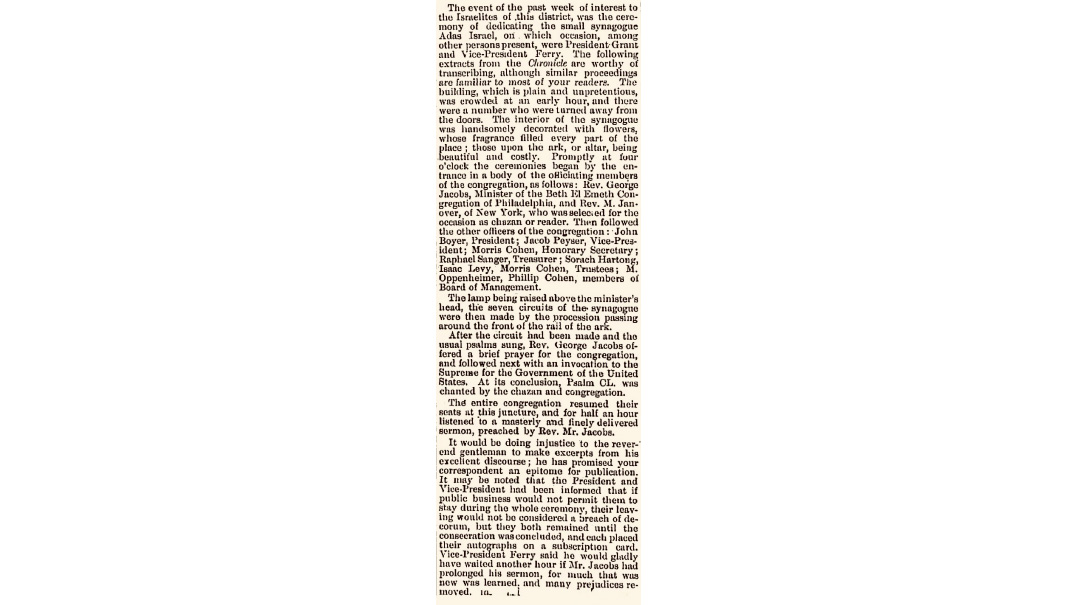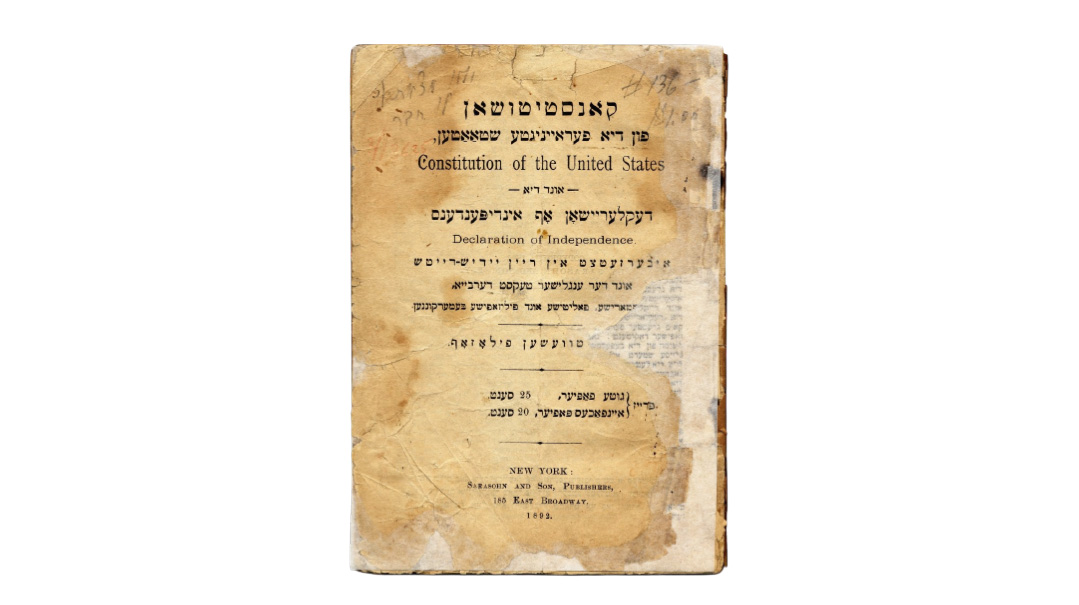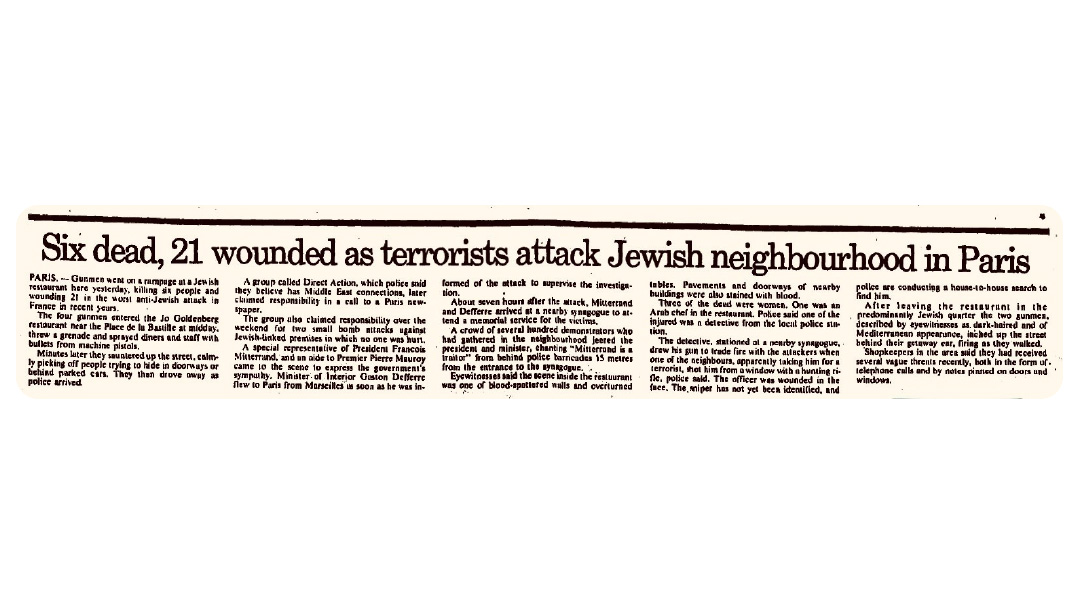Once in a Yovel
| May 16, 2023It wasn’t a new item of clothing or a hard-to-obtain food item that he coveted; rather, it was a list of seforim

Title: Once in a Yovel
Location: Vilna, Poland
Document: Sefer HaYovel L’Harav Shimon Yehuda Hakohein Shkop
Time: 1936
IN 1937, a 23-year-old yeshivah student in Montreux, Switzerland, named Aharon Leib Steinman wrote home to his parents in Brisk, Poland, with a request regarding their upcoming visit. It wasn’t a new item of clothing or a hard-to-obtain food item that he coveted; rather, it was a list of seforim, among them a newly released title unavailable in the picturesque Swiss resort town—the Sefer HaYovel (“Jubilee Book”) written as a tribute to the great Grodno rosh yeshivah, Rav Shimon Shkop, celebrating 50 years of his teaching Torah.
Though such books were common in academic circles, they were novel in Torah society. The compilers envisioned the sefer Yovel on Rav Shkop as a fundraising and publicity vehicle to alleviate the Grodno yeshivah’s desperate financial situation.
The very idea of publishing a sefer Yovel in honor of a live rosh yeshivah generated some controversy. Rav Elchonon Wasserman —a talmid of Rav Shimon Shkop from his days in the Telz yeshivah — questioned the idea. Rav Elchonon refused to submit an entry, citing the fact that jubilee books (known by the German term “Festschriften”) were “not a Jewish custom.” However, the project proceeded with the support of Rav Elchonon’s brother-in-law, Rav Chaim Ozer Grodzenski, who cited the publication’s value as a fundraiser for the Shaar HaTorah yeshivah headed by Rav Shimon in Grodno.
As I surely know and recognize this pure and gentle soul, and the modesty of his righteousness, he will feel uncomfortable and the praise before him will be a strain, as well as the issue of the Jubilee, which is not the custom of our elder rabbis — but Rav Shimon has strained me, the strain of the holy work of bearing the burden of the yeshivah, so he must forgive this and bear this burden as well, due to its purpose: the issue of finding relief for the yeshivah, to lighten its heavy load and the onus of debt hanging over it, which will guide him to rest…
Proceeds from book sales went to the specially designated Jubilee Fund, overssen by Rav Chaim Ozer’s brother-in-law Rav Yitzchok Kossowsky, by Rav Moshe Shatzkes, by Rav Isser Yehuda Unterman, and by Rav Chizkiyahu Mishkowsky.
The sefer was edited by Rav Shimon’s nephew, Rav Moshe Idelevitch. Much can be gleaned from a review of the sefer penned in Der Amerikaner several weeks following its 1936 release by a former yeshivah student, physician, and author in New York named Hirsch Leib Gordon, whose excitement over the volume led him to ponder:
Imagine how great it would be if Festschrifts had appeared for the Vilna Gaon, Rav Hirsch Leib of Volozhin (the Netziv), Rav Yitzchak Elchanan Spector or other Gedolim, during their lifetimes, when their colleagues and students would have the opportunity to evaluate the character and achievements of the Jubilarian?
These thoughts surface while leafing through the imposing Sefer HaYovel marking the 50-year career as Rosh Yeshivah, in four great Torah institutions, of R. Shimon Yehuda HaKohein Shkop. Vilna, Kreines Publishing, 1936, 188 pages. In the memoirs section, his former students pen their impressions of their personal contact with [Rav Shkop].
He was born 77 years ago in Turetz, Minsk Governorate, studied at the yeshivahs of Mir and Volozhin, and married a niece of Rav Eliezer Gordon, the Rosh Yeshivah of Telz, where, three years later, he indeed became a lecturer. In 1903, when Rav Zalman Sender left Maltch, Rav Shkop took over both the rabbinate and the yeshivah there. Four years later, he became Rabbi and Rosh Yeshivah in Breinsk, and 17 years ago a conference of Rabbis in Vilna asked him to assume the post of Rosh Yeshivah in Grodna, where he is found today. Nine years ago, his halachic work Shaarei Yosher was published, and seven years ago he visited the United States on behalf of his yeshivah. Rav Chaim Ozer Grodzenski often refers to him as Shimon HaAmsuni, since he is constantly burdened with his holy work.
Gordon goes on to cite some of Rav Shimon’s eminent students who contributed to the volume: Rav Reuven Katz (Petach Tikvah); Rav Dovid Lifshitz (Suvalki); Rav Moshe Avigdor Amiel (Tel Aviv); Rav Yehuda Leib Nenedik (Kletzk); Rav Moshe Rosenstein (Lomza); as well as a host of other Torah greats, some of whom used pseudonyms.
Twice in a Yovel
Rav Shimon was not the first Eastern European Torah scholar to have a sefer haYovel written on his behalf. The first was presented in honor of Rav Meir Shapiro, spearheaded by a group of his students and printed in 1930. It was published in Lodz by Mesorah Publications to commemorate 20 years of Rav Shapiro’s public service, and presented to him at the opening of Yeshivas Chachmei Lublin. In 1931, a Festschrift was presented to Agudah leader Rabbi Yaakov Rosenheim in honor of his 60th birthday, with contributions from Rav Moshe Mordechai Epstein, Rav Zalman Sorotzkin, and Bais Yaakov co-founder Rabbi Shmuel (Leo) Deutschlander.
America is Anderish
The first American rosh yeshivah to be presented with a sefer haYovel was Rav Yehuda Levenberg of the New Haven yeshivah (which had since moved to Cleveland) in 1934 by his students in honor of his 50th birthday. While dozens have since been published to honor esteemed figures, it’s doubtful any of them garnered the caliber of contributors found in the sefer haYovel published for Rabbi Leo Jung’s 70th birthday in 1962. The volume feature essays from Rav Shlomo Zalman Auerbach, Rav Yosef Eliyahu Henkin, Rav Zalman Sorotzkin, Rav Yechiel Yaakov Weinberg, Rav Reuven Katz, Rav Yechiel Mordechai Gordon, Rav Mordechai Gifter, Rav Isser Yehuda Unterman, Rav Shmuel Ehrenfeld (Mattersdorfer Rav), and Rav Yochanan Sofer (Erlau Rebbe) to name just a few.
(Originally featured in Mishpacha, Issue 961)
Oops! We could not locate your form.







